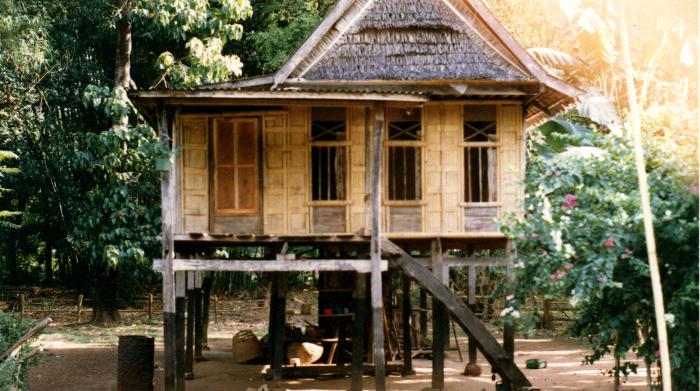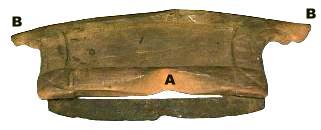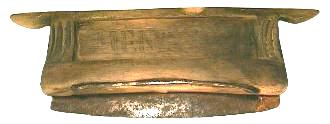


Today only modern hand sickles made out of steel are in use. Sometimes you still can find some old rice harvest knifes in the houses of the farmer, however, this has got very rare.
The "ANI-ANI" knives are approx. 30-80 years old (some may be older ) and ar often very beautiful carved and decorated with geometric and-or zoomorphic pattern.
During use the knives were frequently held tight between the teeth to get free hands for binding the single rice bunches together. This is recognized sometimes to the worn wooden endings (B). The lateral rubbing marks (A) at the wood edge near the steel blade dates from the middle finger. Broken knives were repaired often.


A) Strongly worn lateral edge because of long use.
B) Worn ends from holding between the teeth.
The small cross-bar woodstick on the wooden back of the knife is mostly made from a piece of bamboo and was needed for guidance of the knife. This cross-bar woodstick was replaced often, because during use it loosened itself on the wooden back; partly it was fastened with a piece of cotton again.
Some knives are blackend by smoking because they are kept mostly on the garret which is regulary heavely smooked to fight every sort of insects living there, because the roofs of many houses are only covered with palm brushes.
All "ANI-ANI" rice harvest knifes are handcrafted and are not produced anymore in this pattern today, they are already exhibited in the National Museum of Jakarta, in Java.
Culture Period: Historik; farming people from Sulawesi around the TABO-TABO River area.
Age: 30-80 years and older.
Place found: Forest house villages around the TABO-TABO river, next city is PANGKEP; approx. 35-50 km away.
Finder: Ernst-Dieter Henze
Date found: Okt./Nov. 1995
Note: Simple "ANI-ANI" rice harvest knifes today you can still buy, but hardly to be used. Perhaps by old people on very small rice fields. Finder never watches within all the years of his journeys since 1982 the use of this knives in these areas.
Copyright He-Artefakte. All Rights Reserved